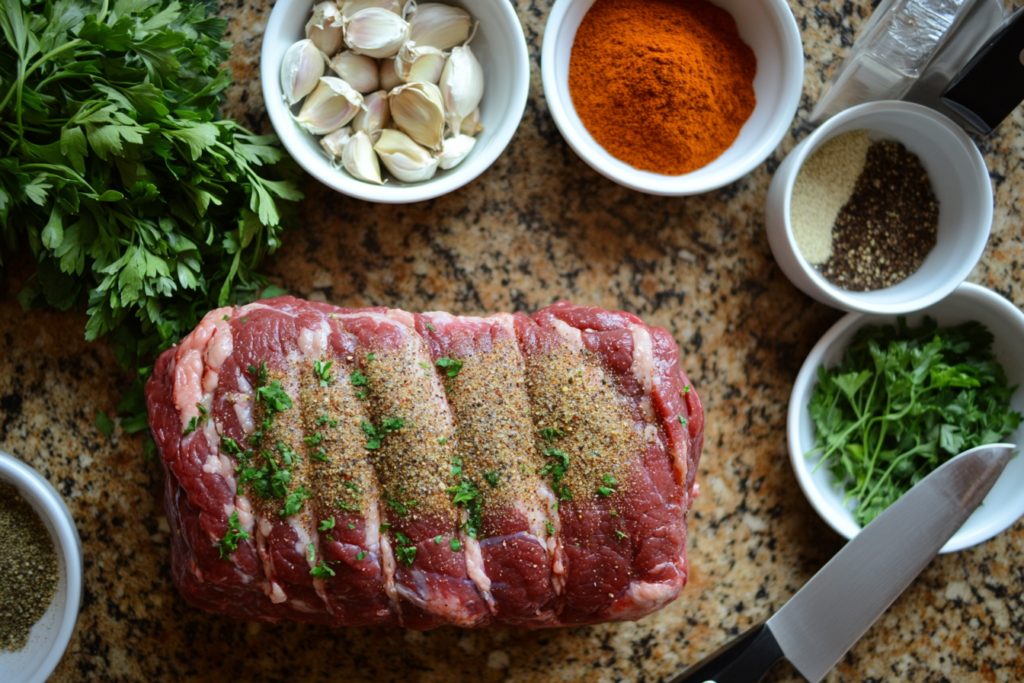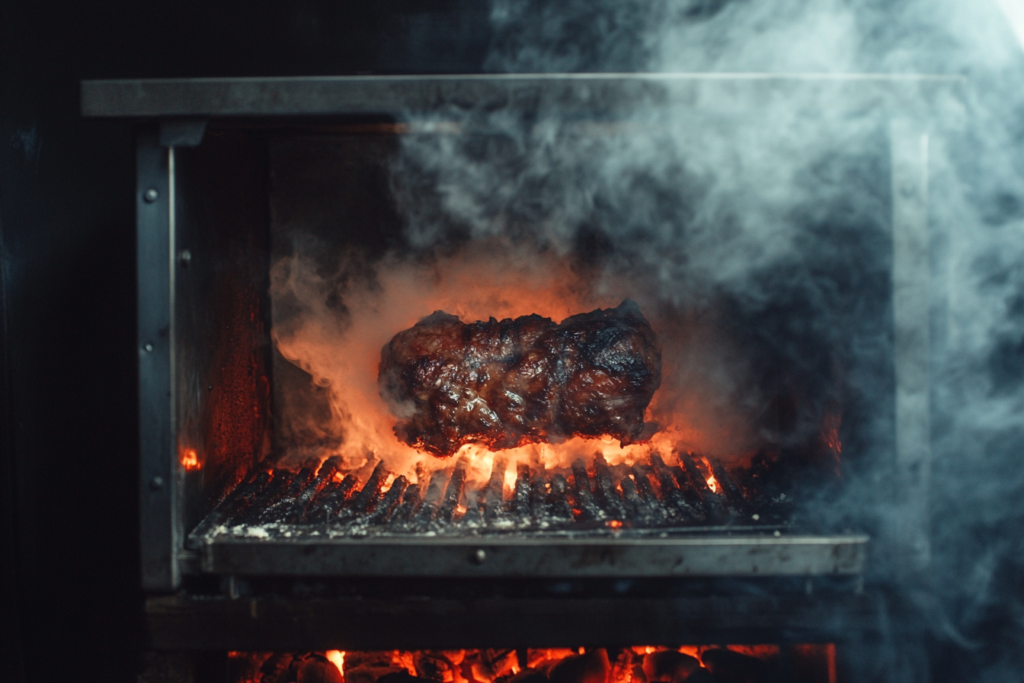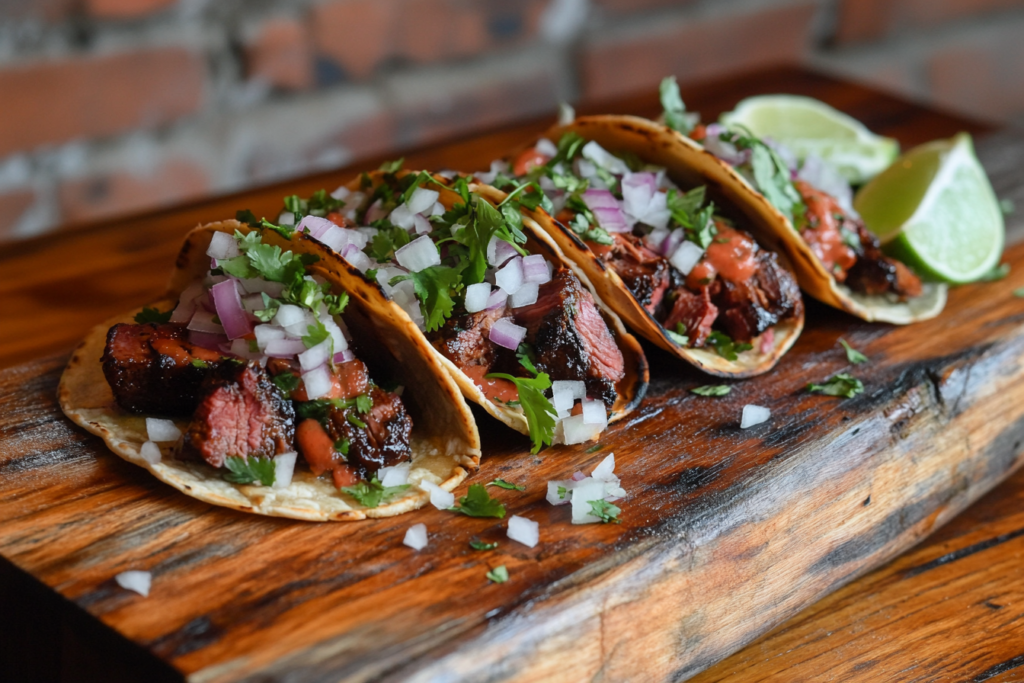If you’re wondering how long to smoke a chuck roast at 225 °F, the answer lies in mastering the low-and-slow cooking method. This smoked meat recipe is not only flavorful and tender but also ensures the rich smoky flavor penetrates deep into the chuck roast while breaking down its connective tissues for perfect tenderness. In this guide, I’ll show you everything you need to know about smoking a chuck roast at 225°F—from preparation to resting. Let’s dive in!
Why Choose a Chuck Roast for Smoking at 225°F?
The chuck roast might not be the fanciest cut of beef, but don’t let that fool you. It’s often referred to as the “poor man’s brisket” for a reason. This cut, taken from the shoulder area of the cow, is packed with flavor and perfect for low-and-slow cooking. If you’re wondering how long to smoke a chuck roast at 225, this flavorful cut is ideal for achieving tender, smoky perfection. What makes it such a standout choice?
The Beauty of Marbling in a Smoked Chuck Roast
Chuck roast boasts a good amount of marbling, which means there’s plenty of intramuscular fat running through it. This fat melts down during smoking, creating tender, juicy bites that practically melt in your mouth.
Affordable, Versatile, and Perfect for Smoking
Unlike pricier cuts like brisket or ribeye, chuck roast is budget-friendly and widely available. You can shred it for sandwiches, slice it for meals, or even turn it into a stew if you have leftovers.
Smoking Chuck Roast Transforms Toughness into Tenderness
Because the chuck roast is a tougher cut, smoking it at 225°F works like magic. The low heat gently breaks down the collagen over several hours, turning what was once a chewy cut into something incredibly tender.
The Ideal Smoking Temperature for a Chuck Roast – Why 225°F?
So, why is 225°F the magic number for smoking? It’s all about balance. Smoking at this temperature allows the meat to cook slowly and evenly, ensuring a tender, juicy final product without drying out. If you’re asking how long to smoke a chuck roast at 225, this low-and-slow method is key to breaking down tough connective tissues while infusing rich smoky flavor.
Smoke Absorption at Low Temperatures for a Chuck Roast
At lower temperatures like 225°F, the meat stays in the “smoke zone” longer. This is the phase where it absorbs the most smoky flavor. If you rush the process at a higher temperature, you risk losing out on that delicious depth of flavor.
How Collagen Breakdown Happens When Smoking a Chuck Roast at 225 °F
When you cook a chuck roast, you’re essentially breaking down its tough connective tissues. This process takes time, as collagen melts into gelatin slowly, especially at 225°F. If you’re wondering how long to smoke a chuck roast at 225, the patience pays off with a buttery texture that’s tender, juicy, and absolutely worth the wait.
How Long Does It Take to Smoke a Chuck Roast at 225°F?
Let’s talk timing. The general rule of thumb for how long to smoke a chuck roast at 225 is 1.5 to 2 hours per pound. However, several factors, like the size of the roast and smoker consistency, can influence this. So, while it’s a good guideline, it’s important not to treat it as a strict rule. Always monitor the internal temperature for the best results.
General Time Estimates
Here’s a quick breakdown:
- 3-pound roast: 4.5–6 hours
- 5-pound roast: 7.5–10 hours
Factors That Affect Cooking Time
- Thickness of the Meat: A thicker roast will take longer than a thinner one, even if they weigh the same.
- Bone-In or Boneless: Bone-in chuck roasts can take slightly longer to cook because bones conduct heat differently.
- Smoker Type and Consistency: Some smokers maintain temperature better than others, which can impact your cooking time.
- Desired Doneness: Most smoked chuck roasts are cooked until an internal temperature of 200–205°F for shredding. If you plan to slice the roast, aim for around 190°F.
The Dreaded Stall – What It Is and How to Handle It
At around 160–165°F, your roast might hit the “stall.” This happens when moisture from the meat evaporates, cooling the surface and slowing down the cooking process. Don’t panic—it’s completely normal! You can wait it out or wrap the roast in foil or butcher paper to speed things up (more on that later).
Preparing Your Chuck Roast for Smoking
Before you even think about firing up your smoker, it’s essential to prepare your chuck roast properly. This step sets the foundation for success.
Step 1: Trim the Roast
Start by trimming any large, hard fat from the roast. While some fat is good for flavor, too much can lead to unpleasantly greasy results.

Step 2: Season Generously
Seasoning is where you can really make your chuck roast your own. A simple blend of salt, black pepper, garlic powder, and paprika works wonders. Want more complexity? Add a bit of cayenne for heat or brown sugar for a touch of sweetness.
- Pro Tip: Let the roast sit with the seasoning for at least an hour, or even overnight in the fridge. This allows the flavors to penetrate deeper.
Step 3: Preheat Your Smoker
Set your smoker to 225°F and get your wood ready. If you’re learning how long to smoke a chuck roast at 225, choosing the right wood is essential for flavor. Hardwoods like oak, hickory, and pecan deliver a bold, smoky taste, while fruitwoods like apple and cherry provide a milder, sweeter profile to complement the beef.
The Smoking Process: Step-by-Step
Now, the fun begins! Smoking a chuck roast is a journey, and each step is crucial to achieving that fall-apart tenderness and rich flavor.

Step 1: Place the Roast in the Smoker
Once your smoker is preheated and producing clean smoke, place the seasoned chuck roast directly on the grates. Close the lid and let the magic happen.
Step 2: Monitor Internal Temperature
Use a meat thermometer to keep an eye on the internal temperature. Around the 4–6 hour mark, your roast should hit 160–165°F. This is where the “stall” often occurs.
Step 3: Wrapping the Roast (Optional)
When the roast hits the stall, you can either wait it out or wrap it in aluminum foil or butcher paper. Wrapping helps retain moisture and pushes the cooking process along faster.
Step 4: Finish Cooking
Continue smoking the roast until the internal temperature reaches 200–205°F for shredding or 190°F for slicing. This could take several more hours, so patience is key!
Step 5: Rest the Meat
Once you’ve reached the desired temperature, remove the roast from the smoker and let it rest for 30–60 minutes. This step is crucial—it allows the juices to redistribute, ensuring every bite is moist and flavorful.
Troubleshooting Common Smoking Challenges
Smoking meat isn’t always smooth sailing, especially for beginners. From temperature fluctuations to the dreaded stall, it’s easy to feel frustrated. But don’t worry! Let’s tackle some common challenges you might face when smoking a chuck roast at 225°F—and how to overcome them.
Challenge #1: The Smoker Temperature Keeps Fluctuating
Consistency is key when smoking meat. If your smoker’s temperature keeps jumping above or below 225°F, it can affect how evenly your chuck roast cooks.
Solutions:
- Preheat Properly: Ensure your smoker has reached and stabilized at 225°F before adding the meat.
- Use High-Quality Fuel: Cheap wood chips or charcoal can burn unevenly, causing temperature spikes.
- Adjust Air Vents: If you’re using a charcoal smoker, the vents regulate airflow and heat. Experiment with vent positions to maintain stability.
- Invest in a Thermometer: Built-in smoker thermometers are often unreliable. A digital thermometer can give you accurate readings.
Challenge #2: The Stall Takes Forever
As mentioned earlier, the stall happens when the internal temperature of the roast plateaus around 160–165°F. It feels like the meat stops cooking, but this is simply the evaporation of moisture cooling the surface of the meat.
Solutions:
- Wrap the Roast: Wrapping the roast in aluminum foil or butcher paper helps trap heat and reduce moisture evaporation.
- Patience is Key: If you prefer a crispier bark, skip the wrapping and let the stall resolve on its own. Just know this can take 1–2 extra hours.
Challenge #3: The Meat Is Too Dry
Dry meat is every pitmaster’s nightmare. A chuck roast should be juicy and tender, but if it’s overcooked or improperly handled, it can turn out dry.
Solutions:
- Watch the Temperature: Pull the roast as soon as it reaches 200–205°F. Cooking beyond this range can dry out the meat.
- Rest Properly: Allow the roast to rest after smoking. This step is crucial for retaining moisture.
- Use a Water Pan: A water pan in your smoker keeps the cooking environment humid, preventing the meat from drying out.
What to Serve with Smoked Chuck Roast
A smoked chuck roast is a show-stopper on its own, but pairing it with the right sides takes your meal to the next level. Whether you’re hosting a barbecue or prepping a hearty family dinner, these accompaniments will complement your smoked roast beautifully.
Classic Side Dishes
- Mashed Potatoes: Creamy mashed potatoes are a comfort food staple that pairs perfectly with the smoky richness of a chuck roast.
- Coleslaw: The tangy crunch of coleslaw provides a refreshing contrast to the smoky, tender beef.
- Mac and Cheese: Cheesy, gooey mac and cheese is always a crowd-pleaser.
Barbecue Favorites
- Cornbread: Sweet, crumbly cornbread is a classic barbecue side that soaks up drippings like a charm.
- Baked Beans: Smoky, sweet baked beans are a natural match for smoked chuck roast.
- Grilled Veggies: Toss some zucchini, bell peppers, or asparagus on the grill for a healthy, smoky side.
Lighter Options
- Garden Salad: A simple green salad with a light vinaigrette balances the richness of the roast.
- Roasted Brussels Sprouts: The caramelized edges and earthy flavor pair wonderfully with smoked beef.
- Cucumber Salad: Crisp cucumbers in a tangy vinegar dressing provide a refreshing break from the heavy roast.
Creative Ways to Use Leftover Smoked Chuck Roast
If you’re lucky enough to have leftovers (and let’s be honest, that’s rare!), don’t just reheat them and call it a day. Smoked chuck roast is incredibly versatile, and there are so many delicious ways to repurpose it.

Make Smoked Beef Tacos
Shred your leftover chuck roast and pile it onto soft tortillas. Top with fresh cilantro, diced onions, and a squeeze of lime for a quick and tasty meal.
Beefy Breakfast Hash
Dice up your leftover roast and toss it with crispy potatoes, onions, and peppers for a hearty breakfast hash. Add a fried egg on top for good measure!
Build a BBQ Sandwich
Stack shredded chuck roast on a toasted bun, drizzle it with your favorite barbecue sauce, and add a crunchy slaw for the ultimate sandwich.
Smoked Beef Chili
Turn your leftovers into a smoky, hearty chili by simmering them with beans, tomatoes, and your favorite spices.
Smoked Beef Pasta Bake
Mix shredded roast with cooked pasta, marinara sauce, and mozzarella cheese. Bake until bubbly for a comforting pasta dish.
Smoking a chuck roast to perfection requires patience and precision, but the reward is worth it. To further refine your smoked chuck roast recipe, explore this detailed Smoked Chuck Roast Easy Guide for step-by-step techniques to achieve the perfect bark and tenderness. If you’re curious about alternative ways to prepare smoked meats, you might enjoy learning about Smoked Turkey Wings, which offer a similarly flavorful low-and-slow smoking experience. Additionally, if you’re a fan of smoky flavors, check out the Best Way to Barbecue Shrimp to add another smoked dish to your repertoire.
Frequently Asked Questions About Smoking Chuck Roast
Should You Wrap a Chuck Roast When Smoking?
Yes, wrapping a chuck roast during smoking is highly recommended, especially when it hits the “stall” at around 160–165°F. Wrapping in aluminum foil or butcher paper helps retain moisture, speeds up cooking by trapping heat, and prevents the meat from drying out. However, if you prefer a crispier bark, you can skip wrapping and let it finish unwrapped—it’s a matter of personal preference!
At What Temperature Does Chuck Roast Fall Apart?
A chuck roast falls apart when its internal temperature reaches 200–205°F. At this point, the connective tissues and collagen have fully broken down, creating a tender, shreddable texture. For slicing, you can remove the roast slightly earlier at around 190°F, but for that “pull-apart” tenderness, 200–205°F is the sweet spot.
How Long Does a 3 lb Chuck Roast Take to Smoke?
At a consistent smoker temperature of 225°F, a 3-pound chuck roast typically takes 4.5 to 6 hours to smoke. The general rule of thumb is 1.5 to 2 hours per pound, but cooking time can vary based on factors like the thickness of the roast, whether it’s bone-in or boneless, and smoker efficiency. Always rely on internal temperature as the best indicator of doneness.
How Long to Cook a 3 lb Roast at 225?
Cooking a 3-pound roast at 225°F in a smoker or oven will generally take 4.5 to 6 hours. This slow and steady cooking process allows the connective tissues to break down, ensuring the meat is tender and juicy. Use a meat thermometer to monitor the internal temperature, aiming for 200–205°F for shredding or 190°F for slicing.
Conclusion
Smoking a chuck roast at 225°F is more than just cooking—it’s an experience. From the initial preparation to the moment you take that first juicy bite, the process is as rewarding as the result. Patience is your greatest ally, and when you take the time to do it right, the payoff is worth every second.
Whether you’re aiming for tender, shreddable beef for sandwiches or perfectly sliced roast for dinner, this guide has given you the tools to master smoking a chuck roast. So fire up that smoker, choose your favorite wood chips, and get ready to wow your friends and family with a smoked masterpiece.

